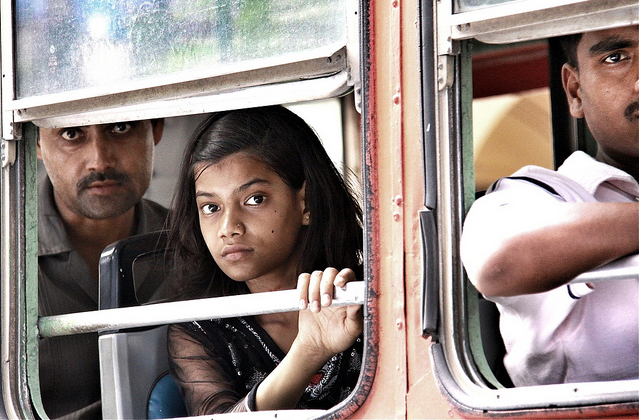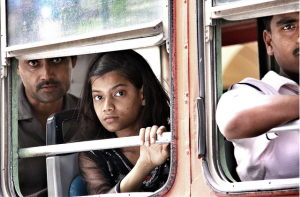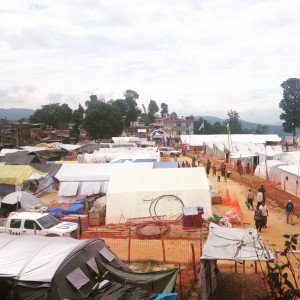Slavery in the 21st Century: A Call to Action

 Having gone to Nepal this summer to research human trafficking of young women and girls, I found that like any other social issue, the country’s blight of slavery is a metaphorical onion with many contributing layers sustaining its existence. Poverty, lack of educational opportunity and socio-cultural perceptions of women and caste are some of the problems on the surface (not to discount their importance), but I soon realized that there are smaller and greater components that all interlink to create a network of causal connections that fuel the international and domestic trade of humans. Each variable is so reinforced by the others that any ideas I previously held about making a difference quickly subsided in the face of a hopeless and immense situation. Since then, I have thought about the ways in which everyone can better contribute to the abolitionist movement and how NGOs and governments can be more effective at tackling the issue.
Having gone to Nepal this summer to research human trafficking of young women and girls, I found that like any other social issue, the country’s blight of slavery is a metaphorical onion with many contributing layers sustaining its existence. Poverty, lack of educational opportunity and socio-cultural perceptions of women and caste are some of the problems on the surface (not to discount their importance), but I soon realized that there are smaller and greater components that all interlink to create a network of causal connections that fuel the international and domestic trade of humans. Each variable is so reinforced by the others that any ideas I previously held about making a difference quickly subsided in the face of a hopeless and immense situation. Since then, I have thought about the ways in which everyone can better contribute to the abolitionist movement and how NGOs and governments can be more effective at tackling the issue.
UNICEF estimates that around 7,000 women and girls are trafficked from Nepal annually, most of them crossing the border into India where many remain in brothels while others are sent as far as the Arabian Gulf, North America and Africa[i]. These women historically were lured by promises of wealthy husbands but today are more commonly deceived by poachers who offer them promising, well-paying jobs[ii]. Most often the girls are lured by someone they know- a relative or a village member – and handed off to a trafficker who takes them to their final destination. When women are purchased they are kept in brothels, massage parlors and sometimes restaurants, under the threatening watch of their captors where they are forced into sexual servitude frequented by large numbers of “customers” (20-40) daily[iii]. The average payment is about $2.50 per visit, of which the brothel owners keep 100%[iv]. In addition to this regular abuse, almost all the women report suffering from beatings, diseases and burns, and they are kept hostage under threats of death or harm to their families[v]. Although there have been a few recovery missions, once they cross the border there is very little chance at return and those who have managed to escape are often rejected by their families due to the stigmas attached to their experiences and their lack of purity. There are currently estimated 200,000 Nepali girls in Indian brothels alone, with another 100,000 more in restaurants and massage parlors.
I went to Nepal with a project in mind- one that could provide vulnerable young women with an income so that they could reach economic stability and simultaneously educate them about the dangers of trafficking. This combination theoretically would deter them from accepting offers for more glamorous opportunities abroad whilst raising their consciousness about the issues of trafficking. I understood that their naivety was not steeped in innocence but rather desperation and a longing for a life of stability and promise. I soon was humbled by my own naivety, in believing that this complex crime could be so easily tackled. During my trip, I found that human trafficking was a multi-headed dragon, an industry that adapts to each new effort to destroy it. While valiant efforts are being made in the fight against it, the changing nature of human trafficking makes it difficult to create a lasting impact and turns the abolitionist cause into a giant game of wack-a-mole. I believe that my optimism was partially due to abstracting the issue from its wider context: the stage on which all these elements played out.
The greater context is this: The Indian- Nepali border is over one thousand miles long and is one of the most porous in the world with only a few check-posts along the way. Nepali and Indian citizens do not need visas to work, live or study across each country. This open border agreement means that the movement of people from one side to the other is practically unrestricted, easing the process of trafficking. Nepal, is one of the world’s poorest countries and is strained for resources. Its poverty is amplified by a lack of domestic industry and a heavy foreign dependence[vi]. In April, the two earthquakes that devastated Nepal’s infrastructure and killed over 8,000 people left the country in a state of emergency and increased economic pressures[vii]. After the earthquake, many people projected that trafficking would increase and indeed it has[viii].
 Like any other chaotic situation such as war or natural disaster, the vacuous results on law and order create opportunities for further exploitation[ix]. The displacement of people caused many to aimlessly migrate in search of new homes and jobs, which increased their vulnerability to poachers. There have even been cases of traffickers entering IDP camps and posing as aid workers to deceive hopeless victims into a new “promising life”. During a meeting with Rajendra Gautam, the President of Three Angels Nepal, an anti trafficking organization, he told me that before the earthquake they had picked up about 4 to 5 girls a day at their border check posts. At the time of the meeting (which was June, almost 2 months since the earthquake), he said that they were stopping 40 to 50 suspected victims of trafficking – a significantly higher number. Difficulty for authorities to properly address the issue of trafficking and part of the reason for the country’s recent instability, is also due to the nations new constitution. After seven years, Nepal was able to pass a new constitution one month ago, which was a hugely positive step, although it has been a source of deep controversy with 40 people having died in related riots . Additionally, many women’s groups have criticized that the constitution further marginalizes their rights in an already patriarchal society
Like any other chaotic situation such as war or natural disaster, the vacuous results on law and order create opportunities for further exploitation[ix]. The displacement of people caused many to aimlessly migrate in search of new homes and jobs, which increased their vulnerability to poachers. There have even been cases of traffickers entering IDP camps and posing as aid workers to deceive hopeless victims into a new “promising life”. During a meeting with Rajendra Gautam, the President of Three Angels Nepal, an anti trafficking organization, he told me that before the earthquake they had picked up about 4 to 5 girls a day at their border check posts. At the time of the meeting (which was June, almost 2 months since the earthquake), he said that they were stopping 40 to 50 suspected victims of trafficking – a significantly higher number. Difficulty for authorities to properly address the issue of trafficking and part of the reason for the country’s recent instability, is also due to the nations new constitution. After seven years, Nepal was able to pass a new constitution one month ago, which was a hugely positive step, although it has been a source of deep controversy with 40 people having died in related riots . Additionally, many women’s groups have criticized that the constitution further marginalizes their rights in an already patriarchal society
Although human trafficking is a multifaceted issue that needs great attention at every level the problem is not irreversible. As David Batstone, a leading abolitionist, stated: “Social movements take root and blossom when enough individuals take personal action. When you tell yourself that there is nothing that you can do to arrest the global slave trade, you underestimate your own potential and abandon hope for those trapped in captivity”[xi]. Neglect should no longer be an option when addressing the 20.9 million people worldwide trapped in captivity.
The abolitionist movement needs a momentum generated by large groups of people taking action. The first step to is to increase awareness; many are not conscious of the fact that in their own hometowns and cities, individuals live in slavery. Self censorship in our communities is detrimental because It allows the existence of slavery to be downplayed and forgotten. If you feel that you are well-informed already, then your priority should be to raise awareness amongst others and share your knowledge at work or on campus. Another important action is to be conscious of your purchases- how they were produced and under which conditions – so that you can avoid buying and supporting merchandise created through slavery. If you feel that you have less time to actively participate in the cause, being a dedicated donor to a legitimate organization is a significant contribution. These actions may seem irrelevant but when they are taken up by many people at once, they will collectively create a dent in the modern day slave trade. Batstone also said: “Today I am convinced that every single individual can make a valuable contribution to arrest the global slave trade. If you doubt that fact, it is probably because your underestimate the power of your personal resources”. The conscience of the world is burdened by many atrocities like slavery, and the decision to put an end to it or blindly allow it to continue lies in each of our hands. It is our responsibility to advocate on behalf of those who are enslaved, to make sure that they are not alone in the world for the sake of our humanity and in the pursuit of a more just world.
[i] UNICEF Reports 7,000 Nepali Women and Girls Trafficked to India Every Year.” UN.GIFT.HUB. N.p., n.d. Web. 25 Oct. 2015
[ii] Ibid
[iii] Ibid
[iv] Kristof, Nicholas. “Meet a 21st-Century Slave.” The New York Times. The New York Times, 24 Oct. 2015. Web. 25 Oct. 2015.
[v] Ibid
[vi] RAPE FOR PROFIT Trafficking of Nepali Girls and Women to India’s Brothels.” Human Rights Watch. N.p., n.d. Web. 25 Oct. 2015.
[vii] Curtis, Natalie. “Nepal Earthquake Continues to Drive Aftershocks through the Lives of Women.” The Guardian. N.p., 25 Oct. 2015. Web.
[viii] McQuade, Aidan. “Human Traffickers Are Targeting Nepal – We Must Do More to Help.” The Guardian. N.p., 6 May 2015. Web
[ix] Ibid
[x] Haviland, Charles. “Why Is Nepal’s New Constitution Controversial? – BBC News.” BBC News. N.p., n.d. Web. 25 Oct. 2015.
[xi] Batstone, David B. Not for Sale: The Return of the Global Slave Trade– and How We Can Fight It. New York: HarperSanFrancisco, 2007. Print.
[xii] Ibid
